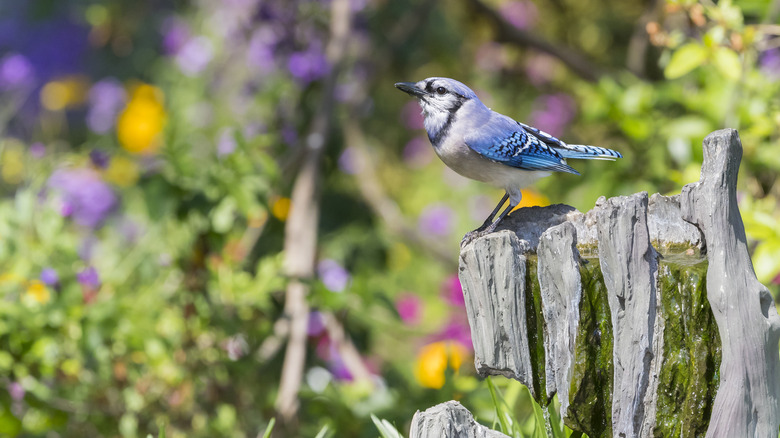The Fiery Red Shrub That Can Attract All Kinds Of Birds To Your Yard
Flowering, berry-producing shrubs are the Swiss army knives of bird habitats. They offer our avian friends so much more than food. Nooks among branches make worry-free spots for nesting, thick foliage for shelter from predators, and flowers for nectar-eaters. But of course, the berries are the star of the show. Red tip photinia (Photinia x fraseri) bushes have gained recent popularity and with good reason. Also going by the name "red robin photinia," these evergreen shrubs make beautiful and functional hedges. There are plenty of evergreen shrubs to make your landscaping look great all year, but the red tip photinia's berries will lure in fruit-loving birds. Both the white blossoms and the red berries will fill the bellies of your birdy guests and give you a year-round show.
These fast-growing shrubs tend to reach between 10 and 15 feet in height and 5 to 8 feet in width, but some top out at around 20 feet, and they can reach widths to match their height. Their name hints at what people have come to love about the plant; new leaf growth is a brilliant red that gradually fades into a dark green. Decorated with juicy berries and colorful birds to eat them, red tip photinia will brighten your yard in any season.
Bring on the birds
Shrubs become a safe haven for birds in your yard in several ways. Photinias have dense foliage that make for well-hidden perches and nests, and their evergreen leaves allow birds to benefit from this shelter all year long. Certain birds go cuckoo for berries, such as robins, cardinals, blue jays, goldfinches, and mockingbirds. Some of these feathered friends don't migrate, but the red tip photinia has berries that last throughout the winter, providing a food source for non-migrating birds during the hungry seasons.
It's not just the berries that provide a good snack. Hummingbirds enjoy the nectar from the white blossoms in spring, and they give back by aiding with pollination. The flowers emerge in mid-spring, just in time to fuel up newly arrived hummingbirds. Flowers last about three weeks, and they become berries that ripen by late summer.
The shrub is considered low maintenance, growing best in zones 6b to 9. They are somewhat drought resistant and like fertilization in early spring and midsummer. What's more, red tip photinia is among the deer-resistant shrubs to landscape your yard and protect your garden. Plant them in a spot that gets at least six hours of full sunlight per day. Photinia need regular heavy watering in their first year, but in later seasons, they only require extra water during droughts. They are poor self-pollinators, however, so in order to produce the berries coveted by birds, you'll need to plant at least two near each other.
